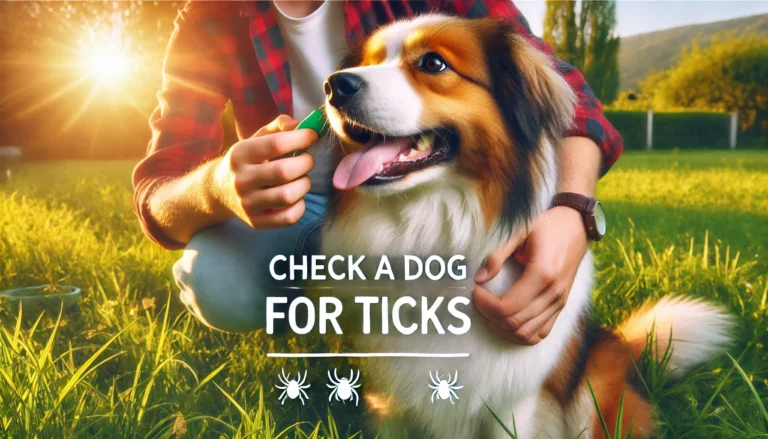Can Dogs Eat Pineapple? 7 Surprising Benefits & Risks

Many dog owners wonder, Can dogs eat pineapple? Pineapple is a sweet, tropical treat packed with nutrients for humans, but is it safe for our furry friends? The answer is mostly yes, but with a few important considerations. Pineapple offers several health benefits for dogs, such as vitamins, fiber, and hydration. However, there are also risks, especially if served in excess or in the wrong form.
In this article, we’ll explore the benefits and potential dangers of feeding pineapple to dogs, how much they can safely eat, and the best ways to serve it. We’ll also touch on whether pineapple can help with certain dog behaviors, like preventing poop-eating.
Is Pineapple Safe for Dogs?
Yes, dogs can safely eat pineapple in moderation. Fresh, ripe pineapple is a healthy snack that can be beneficial for dogs, provided it’s served in controlled amounts. Pineapple contains a range of essential vitamins, including vitamin C, B-complex vitamins, and minerals like manganese, which can support your dog’s immune system and overall health.
However, while fresh pineapple is generally safe, some forms can be harmful. For example, canned pineapple often contains added sugars and preservatives, which are not safe for dogs and could lead to digestive upset or even long-term health issues. Pineapple juice can also be problematic because it’s concentrated with natural sugars and lacks the fiber that helps balance those sugars in fresh fruit. Always avoid feeding your dog pineapple that’s been canned in syrup or juice unless it’s labeled as “no added sugar.”
Key points to consider for safety:
- Remove the skin and core: The tough outer skin and fibrous core of the pineapple can be difficult for dogs to digest and may even pose a choking hazard.
- Serve in moderation: Although pineapple offers health benefits, too much can lead to digestive issues, such as diarrhea or stomach upset.
Health Benefits of Pineapple for Dogs
Pineapple can be a nutritious treat for dogs when given in moderation. This tropical fruit is packed with vitamins, minerals, and antioxidants that support a dog’s immune system, digestion, and hydration. Here’s a closer look at the main health benefits that pineapple can offer to your pup.
Key Benefits of Pineapple for Dogs
- Boosts Immunity
Pineapple is rich in vitamin C, which helps strengthen a dog’s immune system, protecting them from common illnesses. - Improves Digestion
The fiber in pineapple promotes better digestion, which can be especially beneficial for dogs with occasional digestive issues. - Supports Bone Health
Pineapple contains manganese, an essential mineral for strong bones and connective tissues in dogs. - Hydrates Naturally
With its high water content, pineapple can help keep your dog hydrated, especially on hot days. - Aids in Inflammation Reduction
Pineapple contains bromelain, an enzyme known for its anti-inflammatory properties, which can be helpful for dogs with arthritis or other inflammation issues.
Nutrient Breakdown Table
| Nutrient | Benefit for Dogs | Amount per 100g of Pineapple |
|---|---|---|
| Vitamin C | Boosts immunity | 47.8 mg |
| Fiber | Aids digestion | 1.4 g |
| Manganese | Supports bone health | 0.927 mg |
| Bromelain | Reduces inflammation | Trace amounts |
| Water | Keeps dogs hydrated | 86% |
Quick Tip
Always serve fresh, ripe pineapple in small, bite-sized pieces to prevent choking or digestive upset.
Risks of Feeding Dogs Pineapple
While pineapple has several health benefits, there are also some risks to be aware of. Overfeeding or improper preparation can lead to digestive issues or other health concerns for your dog. Here’s what you need to keep in mind.
Potential Risks of Pineapple for Dogs
- Digestive Upset
Too much pineapple can lead to stomach upset, diarrhea, or vomiting due to its high fiber and natural sugar content. - High Sugar Content
Pineapple is naturally high in sugar, which can contribute to weight gain, especially in small dogs or those with diabetes. - Choking Hazard
The tough core and skin of the pineapple are not digestible and can pose a choking hazard or cause intestinal blockages. - Allergic Reactions
Although rare, some dogs may have an allergic reaction to pineapple. Watch for symptoms like itching, swelling, or difficulty breathing.
Dos and Don’ts of Feeding Pineapple to Dogs
| Dos | Don’ts |
|---|---|
| Serve fresh pineapple in small pieces | Avoid canned pineapple with added sugar |
| Check for allergic reactions | Don’t feed the core or tough outer skin |
| Feed as an occasional treat, not daily | Avoid giving large amounts at once |
Pro Tip: If it’s your dog’s first time trying pineapple, start with a small amount to check for any signs of digestive discomfort or allergies.
Warning Box: High Sugar Alert
Warning: Due to its natural sugars, pineapple should be given sparingly to dogs prone to weight gain or with diabetes.
How Much Pineapple Can Dogs Eat?
Feeding your dog the right amount of pineapple is key to avoiding any digestive issues. Pineapple should be given as an occasional treat and not as a regular part of their diet. Here’s a simple guide based on your dog’s size to help you serve the right amount.
Recommended Portion Sizes
| Dog Size | Serving Size |
|---|---|
| Small dogs | 1-2 small chunks, 1-2 times a week |
| Medium dogs | 3-4 small chunks, 1-2 times a week |
| Large dogs | 5-6 small chunks, 1-2 times a week |
Note: Keep portion sizes small. Pineapple is meant as a treat, so stick to the recommended amounts.
How to Serve Pineapple Safely
- Cut into Bite-Sized Pieces
Always cut the pineapple into small, chewable pieces to avoid choking hazards, especially for small dogs. - Remove Skin and Core
The skin and core are hard and can be tough on a dog’s digestive system. Only feed the soft, fleshy parts of the pineapple. - Serve Fresh or Frozen
Fresh pineapple is best, but you can also freeze small pieces for a refreshing treat on hot days. - Avoid Added Sugars
Canned pineapple or pineapple juice usually contains added sugars, which are not safe for dogs.
Portion Control Reminder Box
Reminder: Always keep treats like pineapple to no more than 10% of your dog’s daily calorie intake. This helps prevent overfeeding and keeps their diet balanced.
Pineapple and Dog Behavior: Can It Stop Poop-Eating?
One surprising reason some dog owners give their dogs pineapple is to prevent a behavior called coprophagia, or poop-eating. The theory is that pineapple’s enzymes make the dog’s stool taste unappealing, potentially deterring the dog from consuming it. Although evidence is largely anecdotal, some pet owners find this method effective.
Why Dogs Eat Poop
Here are a few common reasons dogs might engage in this behavior:
- Nutrient Deficiencies: Dogs sometimes eat stool to make up for missing nutrients.
- Boredom or Anxiety: Stress or lack of mental stimulation can lead to unusual behaviors, including poop-eating.
- Attention-Seeking: Some dogs repeat behaviors that get a reaction from their owners, even if it’s negative.
How Pineapple Might Help
Pineapple contains bromelain, an enzyme that can change the taste of stool, potentially discouraging dogs from eating it. While not a guaranteed solution, it may be worth trying if your dog is displaying this behavior.
Quick Tips for Using Pineapple to Stop Poop-Eating
- Feed in Small, Regular Amounts
Give your dog a small piece of pineapple daily. Consistency is key for potential behavior change. - Combine with Other Solutions
Behavioral training, keeping the yard clean, and ensuring a balanced diet can also help reduce coprophagia. - Consult a Veterinarian
Always check with your vet before using pineapple or other remedies, especially if your dog’s poop-eating persists.
Note: Pineapple alone may not stop this behavior for every dog. It’s best to combine it with training and diet adjustments for a comprehensive approach.
Can Dogs Eat Different Forms of Pineapple?
Not all types of pineapple are safe for dogs. While fresh pineapple is generally healthy in moderation, some other forms may pose risks. Let’s take a look at which types of pineapple are safe for dogs and which to avoid.
Safe and Unsafe Pineapple Forms for Dogs
| Pineapple Form | Safe for Dogs? | Notes |
|---|---|---|
| Fresh Pineapple | ✅ Yes | Best option; serve in small pieces, with skin and core removed. |
| Frozen Pineapple | ✅ Yes | Safe in moderation; a cooling treat for hot days. |
| Canned Pineapple | ❌ No | Usually contains added sugar and preservatives; avoid due to high sugar content. |
| Pineapple Juice | ❌ No | High in sugar and lacks fiber; not suitable for dogs. |
| Dried Pineapple | ❌ No | Concentrated sugars and may contain additives; avoid to prevent digestive issues. |
| Cooked Pineapple | ✅ Yes, with caution | Safe if unseasoned, but can lose some nutrients through cooking; best given occasionally. |
Quick Tip Box: When in doubt, stick with small amounts of fresh or frozen pineapple. Avoid any processed or sweetened versions, as they can harm your dog’s health.
The Best Way to Serve Pineapple to Dogs
- Fresh or Frozen Chunks: For maximum nutrition and minimal risk, serve pineapple in small, fresh or frozen chunks.
- Add to Treats: You can mix small pieces into homemade dog treats, combining the fruit with dog-safe ingredients.
- Frozen Pineapple Cubes: Freeze small chunks in water or plain yogurt (no added sugar) for a refreshing summer treat.
Best Ways to Serve Pineapple to Dogs
Serving pineapple to your dog can be a fun and safe way to add variety to their treats. Here are some creative, dog-friendly ways to serve pineapple that are both safe and nutritious!
1. Fresh Pineapple Chunks
- Preparation: Peel the pineapple, remove the core, and cut the flesh into small, bite-sized pieces.
- Serving Size: Limit to a few chunks, depending on your dog’s size (see portion guide above).
- Benefits: Simple, easy, and full of nutrients without any additives.
2. Frozen Pineapple Cubes
- Preparation: Freeze small pineapple chunks or place them in an ice cube tray with water or plain, unsweetened yogurt.
- When to Serve: Great for hot weather; gives your dog a refreshing treat while hydrating them.
- Tip: Perfect for dogs who enjoy crunching on cold treats!
3. Pineapple-Infused Dog Treats
- DIY Recipe Idea: Blend pineapple with plain Greek yogurt and a small amount of dog-safe peanut butter (unsweetened and free from xylitol). Pour into molds or ice cube trays and freeze for a healthy, homemade treat.
- Serving Tip: Serve one treat at a time to avoid excess sugar.
4. Pineapple and Dog-Friendly Veggies Mix
- Preparation: Mix small chunks of pineapple with a few dog-safe vegetables like carrots or cucumbers for a refreshing snack with added fiber.
- Benefits: Adds variety and nutrients while keeping your dog’s interest.
Important Note: Avoid seasoning pineapple with any sugar or salt. Stick to simple, natural ingredients that are dog-safe.
Fun Serving Idea Infographic
We could create a simple infographic showing the “Top 3 Dog-Friendly Pineapple Treats” with step-by-step instructions and icons for each treat.
Did you Know?
Recognizing the signs your cat is dying can be emotionally challenging, but it allows you to support and comfort them through this time. By knowing when your cat is approaching the end, you can create a peaceful environment, reduce any pain, and ensure they feel safe. Signs of a dying cat vary, but watching for the above symptoms and changes in behavior helps you know when it might be time to say goodbye.
Conclusion
Pineapple can be a safe, refreshing treat for dogs when served correctly and in moderation. Packed with vitamins, antioxidants, and hydrating properties, pineapple offers several health benefits, including immune support, improved digestion, and hydration. However, it’s essential to avoid overfeeding due to its high sugar content and to steer clear of canned or sweetened pineapple, as these forms contain added sugars and preservatives that can harm your dog’s health.
If you decide to feed pineapple to your dog, always remove the skin and core, and serve in small, bite-sized chunks. Fresh or frozen pineapple is best, and you can even incorporate it into homemade treats for added variety. Remember that treats like pineapple should only make up 10% or less of your dog’s daily calorie intake.
Frequently Asked Questions (FAQs)
1. Can puppies eat pineapple?
Yes, puppies can eat small amounts of fresh pineapple. Introduce it slowly and observe for any digestive issues.
2. Is pineapple safe for dogs with diabetes?
It’s best to avoid pineapple for diabetic dogs due to its natural sugar content, which could raise blood sugar levels.
3. Can pineapple stop my dog from eating poop?
Pineapple may help deter this behavior in some dogs, but results vary. Try a small amount and observe if there’s a change, along with addressing any nutritional or behavioral causes.
4. Is canned pineapple safe for dogs?
No, canned pineapple usually contains added sugars and preservatives, which are not healthy for dogs. Stick to fresh or frozen pineapple instead.
5. Can dogs eat pineapple core?
No, the core is too tough and fibrous, posing a choking hazard and potential digestive issues. Only serve the soft, fleshy parts.
With its health benefits and tasty appeal, pineapple can be a safe and enjoyable addition to your dog’s occasional treats. Just remember to follow the guidelines in this article for safe preparation and portion control to keep your dog happy and healthy.







